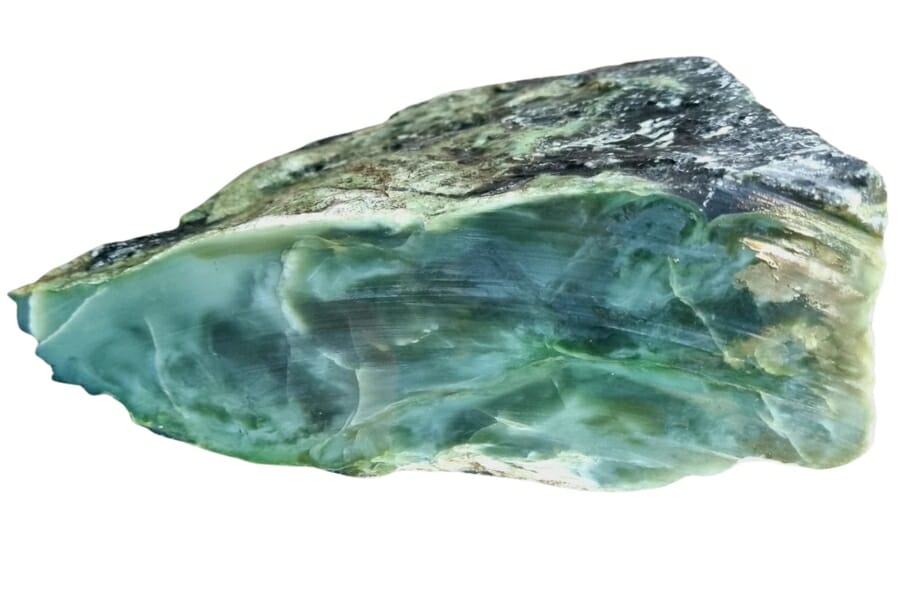Jade is a beautiful and valuable stone that has been cherished for thousands of years. But did you know that there are fake jades out there? Some people try to sell fake jade as if it’s the real thing.
So, how can you tell the difference? You can get clues about its authenticity by examining the stone’s color, feeling its smoothness, and hearing its sound when tapped.
Getting familiar with these tests ensures you are on the right track to owning a genuine piece of jade. Knowing how to identify real versus fake jade can help you ensure you get the real deal. Let’s learn how to spot the differences!
Understanding Natural Jade And Why Fakes Are Common
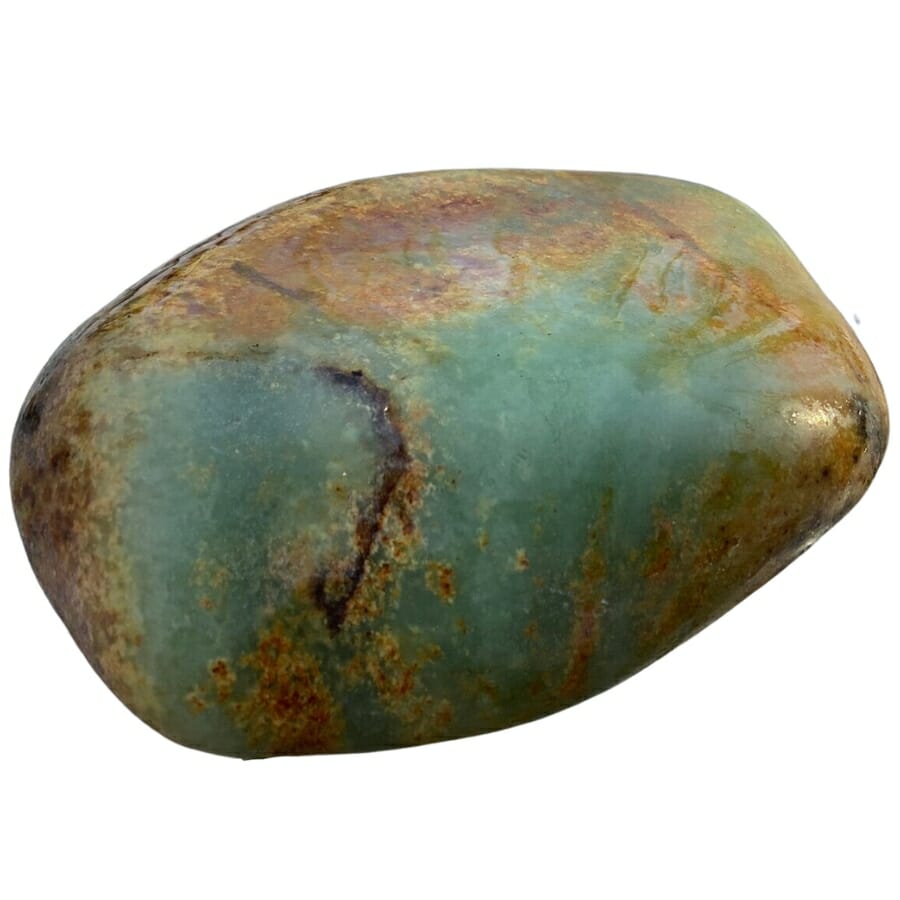
Jade is a special type of stone that has been loved for thousands of years because it is beautiful and strong. It takes millions of years and a lot of heat and pressure deep inside the Earth’s crust to make it.
Jade is not the name of a single mineral. Instead, it is the name of two minerals, nephrite and jadeite, that look similar but are not the same.
One of the cool things about jade is that it’s a very hard stone, which makes it durable and long-lasting. It looks nice because its colors range from different shades of green to white, black, yellow, and lavender.
Since ancient times, jade has been used to make tools, jewelry, and beautiful sculptures. People love to wear rings, necklaces, and bracelets made of jade. Artists and craftspeople like to work with jade because it is smooth and can be carved into designs with a lot of detail.
The current value of jade is not just because of its beauty but also its historical and cultural significance, especially in places like China and Mesoamerica. In many cultures, it’s seen as a symbol of purity, protection, and power. Its rareness also adds to its value; the rarer the type of jade, the more valuable it is.
Lastly, jade has special qualities that set it apart. It feels cool and has a beautiful smooth surface. When held up to the light, it can also have a nice, translucent glow, which is part of its charm. With all these amazing qualities, it’s no wonder that jade has been valued and used in many ways throughout history!
Why you’re seeing more fake jade these days
More fake jade is on the market because there is more demand for it, especially in places like China where it is very valuable. Everyone wants a piece of this beautiful stone, but real jade is hard to find and can be expensive.
Some people see this as a chance to sell fake jade and make money. Because of changes in technology, it is now easier to make fake jade that looks pretty real.
These fakes can be made out of glass, plastic, or cheaper stones and then sold as real jade to people who don’t know any better. This way, the seller makes money and the buyer gets taken advantage of.
You should learn how to spot real jade so you don’t get fooled by the fakes on the market.
How To Identify Real Jade
Trying to find real jade in a market full of fakes can be both a rewarding and difficult task. Because of how appealing jade is, many fakes that often look like this prized stone have been made.
We know it’s hard to tell what rocks you have, so we’re here to help! Here, you can look at rock and mineral guides for each state to see if you can identify rocks that you have.
By learning about the unique qualities of real jade and using a variety of simple but effective tests, people can easily tell the difference between real jade and fake jade, making sure that the items they buy are real and worth what they paid for.
Observe its rich color
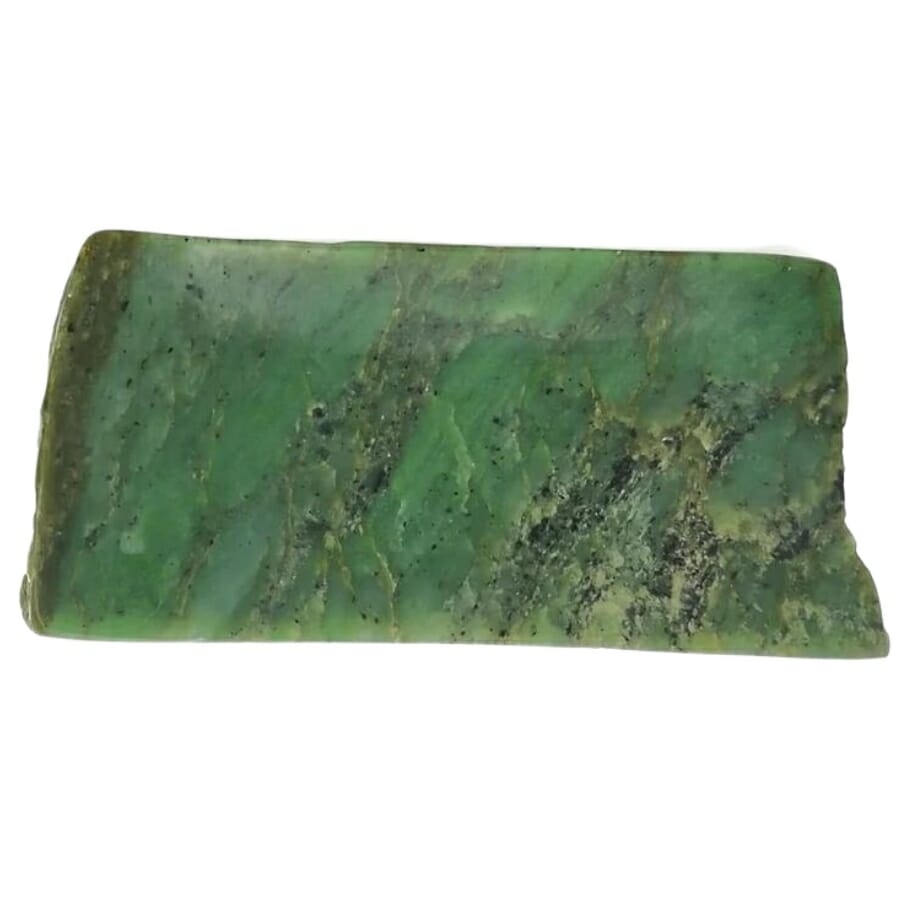
You need a sharp eye and good lighting to see jade’s rich color. Real jade can be different shades of green, as well as white, pink, lavender, or even black. The best way to check the color of a piece of jade is in natural sunlight, which shows the stone’s true color.
To be sure the jade is real, look for a deep, even color that doesn’t look too bright or fake. Real jade doesn’t look like bright, shiny glass. Instead, it has a kind of deep, soft glow.
Hold the jade up to the light and look at how it looks. Real jade should have a smooth, even color that makes your eyes feel calm. Sometimes fake jade has bubbles inside or looks very clear and glassy, which are signs that it’s not real jade.
Pay attention to the texture of the jade while you look at the color. Real jade is smooth and looks like it is made of wax or pearls. Red flags are places where the color looks like it was painted on, is too shiny, or isn’t even.
Since real jade is a natural stone, it often has small flaws. But based on color alone, it can be hard to tell if something is real jade. If you’re not sure, it’s always best to do more tests or ask an expert.
Check if it is cool to the touch
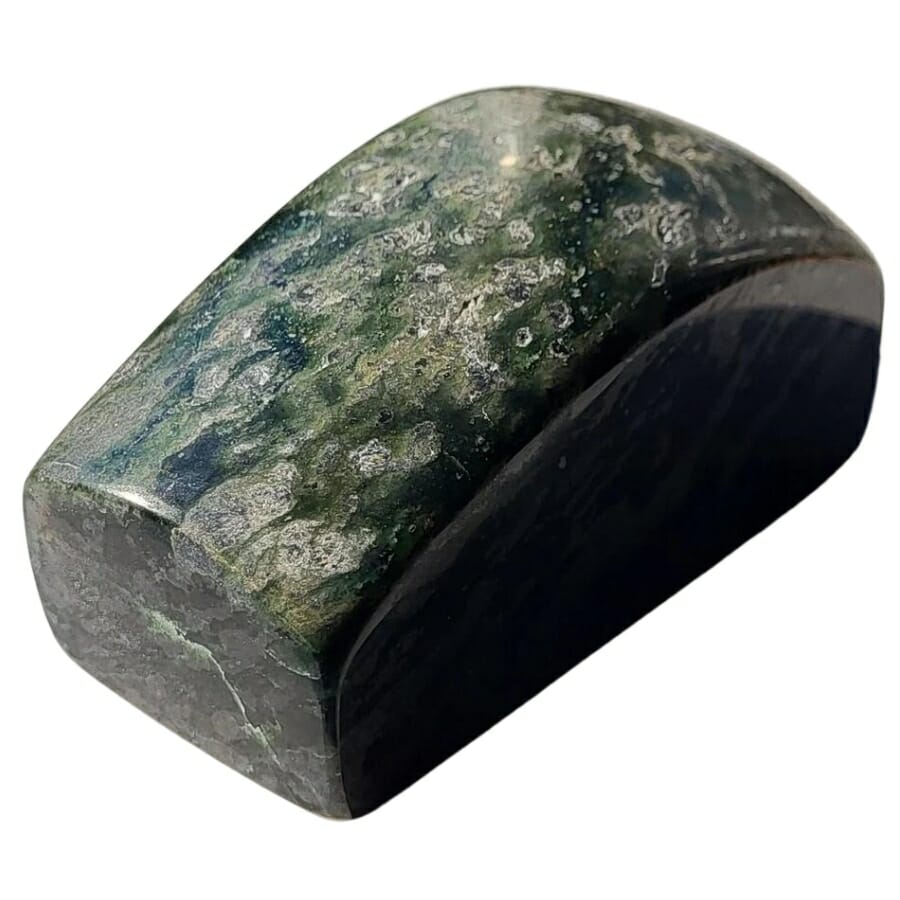
One simple and old way to figure out if a jade stone is real is to feel how cool it is. Real jade feels cool to the touch and stays cool even when your hand starts to warm it up.
Feel the temperature of the jade stone by holding it in your hand. It should feel cool, not warm or like the temperature in the room. If it’s real, it will feel cool when it touches your skin.
Now, compare it to another stone or piece of plastic that has been in the same room. You’ll probably notice a change. The jade will take longer to warm up to the temperature of your hand than the other things.
Putting the jade piece on your cheek is another fun way to test. Since your face is sensitive to heat, it’s easy to feel how cool the stone is.
You can also quickly rub the stone between your hands to warm it up, then feel how quickly it cools down again. Fake jade will cool down more quickly than real jade.
These are easy ways to tell if something is cool, but keep in mind that they are not foolproof. Sometimes, other materials can look like jade, so you should always use more than one way to ensure your jade is real.
Look at the transparency
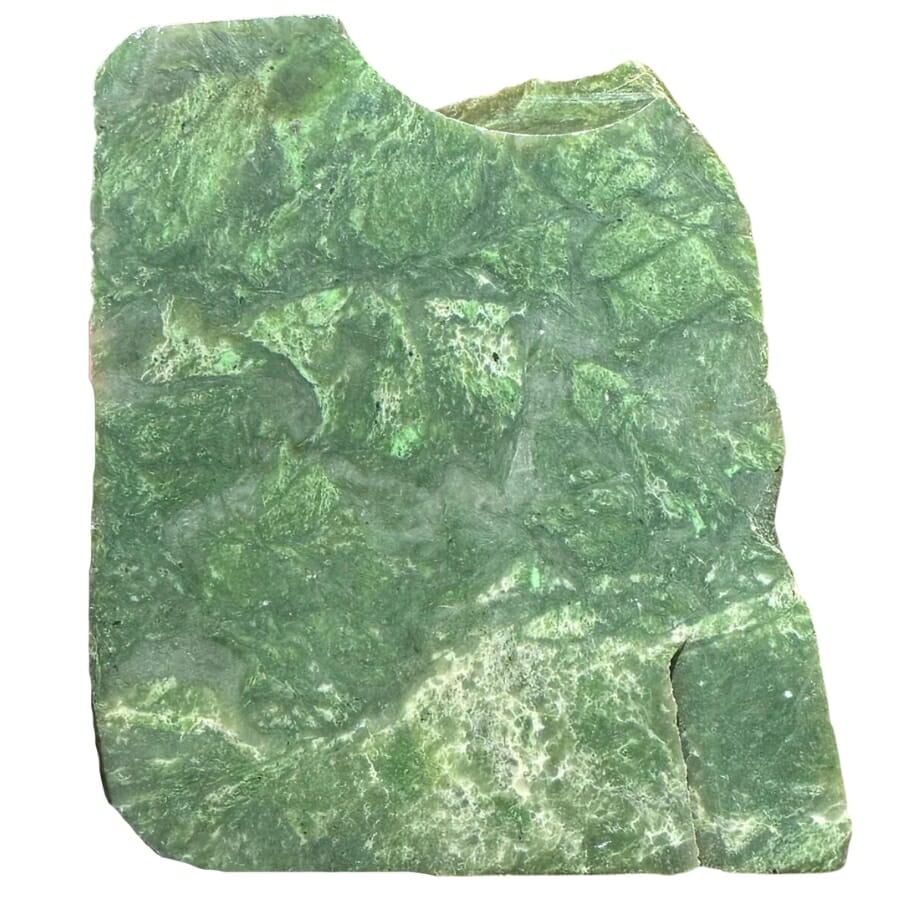
One interesting way to find out if a jade is real is to look at how clear it is. Real jade has what is called a “mellow glow,” which is a kind of transparency.
Look for a place with good light. The best light comes from the sun, but a bright lamp will also work. Look at how your jade piece looks when you hold it up to the light. Real jade lets some light through, which makes it glow in a beautiful, soft way.
Now, look at this stone or piece of glass and compare it to another one. Glass lets a lot of light through, making it look clear or too bright, while plastic doesn’t let much light through. When held up to the light, real jade has a smooth, almost “creamy” look.
You could also use a flashlight to look at the jade. If it’s real, the light will make a warm glow, but if it’s fake, the light might pass through clearly or not at all.
It’s amazing to see how light affects different things. You can tell a lot about the quality and authenticity of jade by how clear it is.
But remember that this test may not be enough to prove your jade is real. You should always use multiple methods to ensure your jade is real.
Listen to its sound
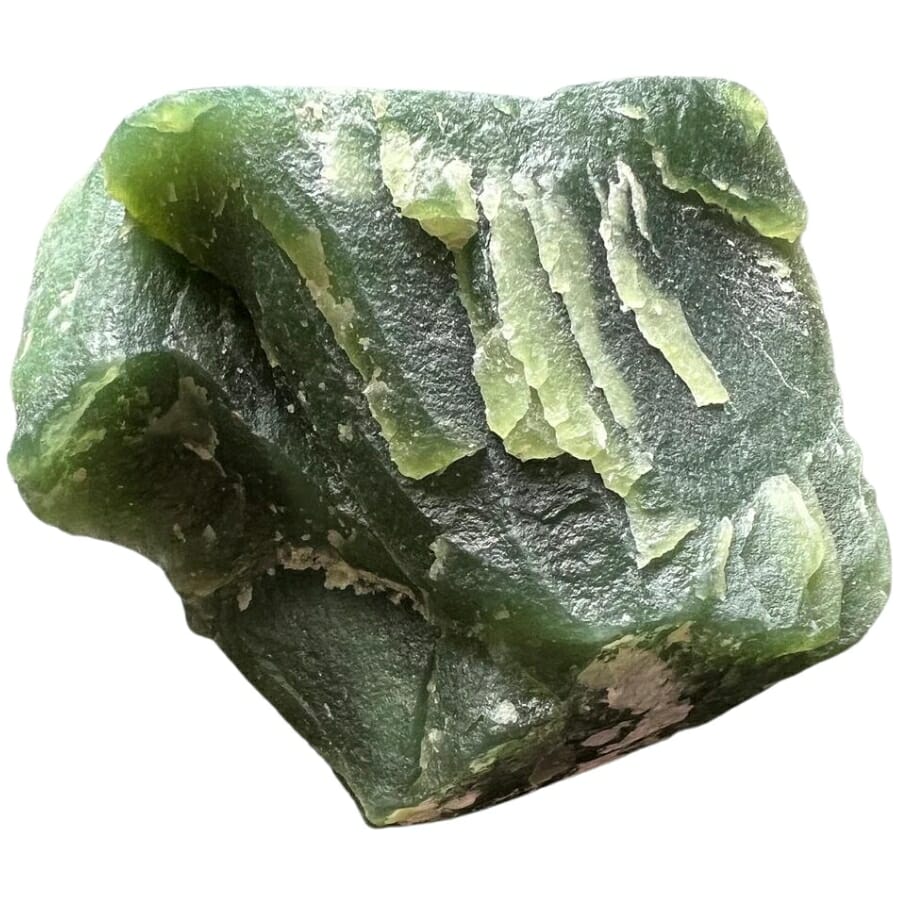
One unique and old way to tell if jade is real is to listen to how it sounds. People sometimes call this the “clink” test. When you tap real jade, it makes a clear, pleasant sound.
Find somewhere quiet where you can hear well. Now, hold the piece of jade and tap it gently with another piece of jade or something metal, like a coin. Real jade makes a high-pitched, resonating sound, almost like a chime, when it is tapped. It has a clear, sweet tone that stays with you for a while.
If it’s fake jade, it might make a sound like a thud, which is dull and low-pitched. The sound doesn’t last long when it comes from fake jade.
You can also gently throw the jade into the air, catch it, and listen to the sound it makes. Since real jade is dense, the sound it makes is fuller and more musical.
This method can feel like a fun experiment, but keep in mind that you need a good ear and a little practice to do it well. It’s also better to use it with other ways to make sure you’re getting real jade.
Sometimes the sound test is hard, but after a while you’ll be able to tell the difference between real and fake jade by how it sounds.
Perform a scratch test
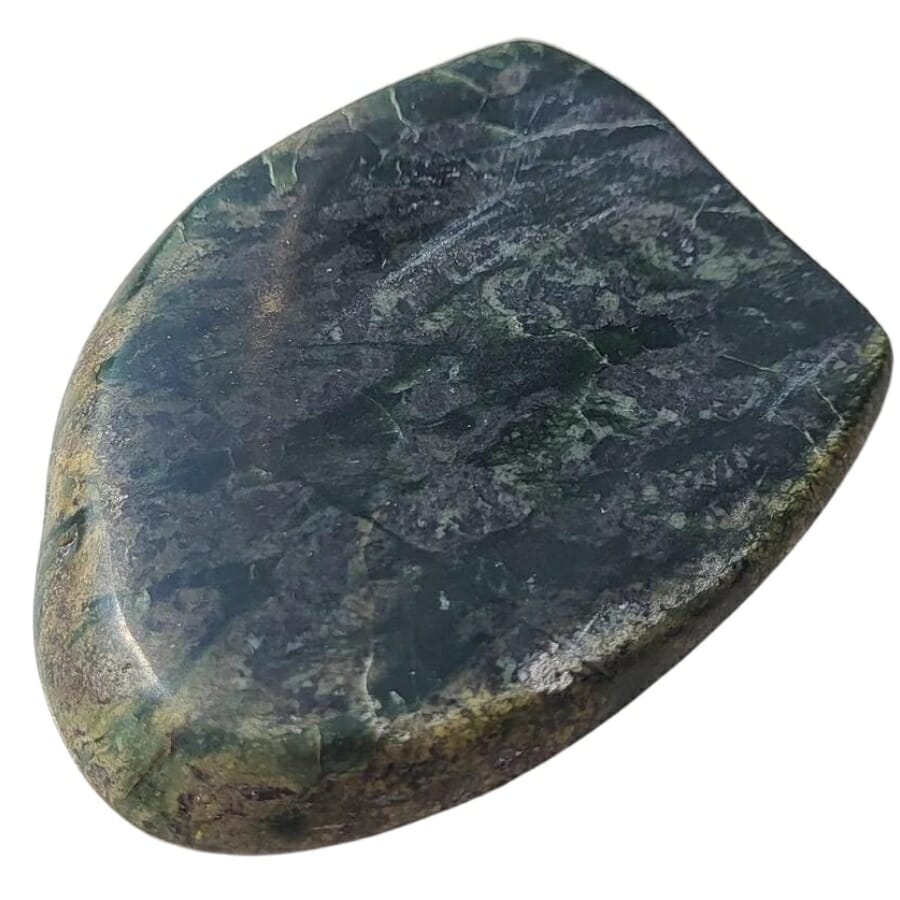
Because real jade is hard, the scratch test is a common way to find out if a piece is real. Look for a place on the jade where a small scratch won’t stand out. Even if the jade turns out to be fake, you should always be careful not to damage it.
Now, try to scratch the jade’s surface gently with a sharp knife or a steel nail. Put some pressure on it, but not too much. Jade is a very hard stone, so if it’s real, it shouldn’t be easy to scratch.
On the other hand, the jade piece is probably not real if it scratches easily. Many things that look like jade but aren’t are softer and can be scratched.
Don’t forget that it’s important to be careful during this test because you don’t want to hurt the jade or any other stone. And while the scratch test can be helpful, it’s just one of many tests.
Real jade can handle a lot, but you should be careful with every test. Also, if you want to ensure your jade piece is real, you might want to do a few tests or talk to an expert.
The Different Types Of Fake Jade And What They Look Like
Exploring the world of jade can lead you to discover that not all jade is genuine; there are different types of fake jade out there. These imitations can look quite convincing, with colors and textures closely resembling real jade, but they’re made from different materials like glass, plastic, or dyed quartz.
Understanding the various types of fake jade and what makes them different, you’ll be able to tell if you’re looking at the real thing or a cleverly disguised fake.
We’ll go over the kinds so you know what to look out for when you’re looking for a real jade.
Albite Jade
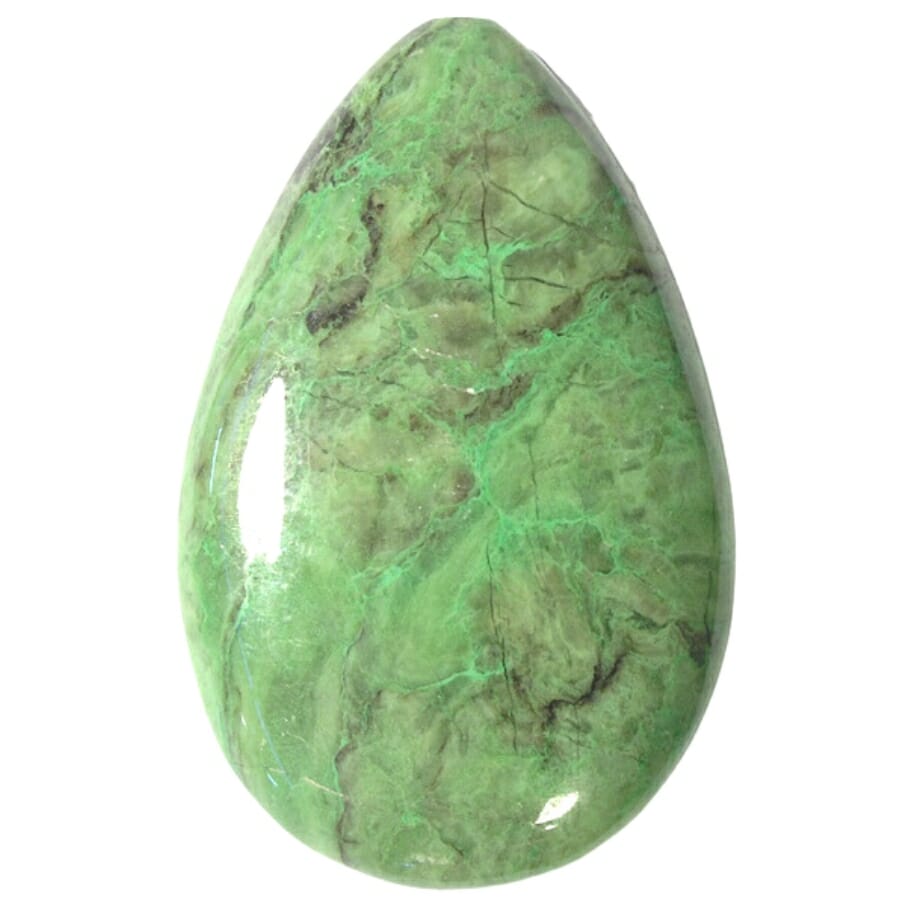
Albite is a type of mineral that can look a lot like jade, but it’s not the real thing. It’s one of those deceptive materials that can make people think it’s real jade. So, how is it made and how is it used to look like real jade?
Miners dig albite out of the ground where it is already there. Once they have enough albite, they bring it to places where it can be cut and polished like jade.
Just like with real jade, skilled workers shape it into things like bracelets, pendants, and sculptures. They polish it until it looks great. Now, you can sell it as jade.
But albite feels and looks different than real jade when you look at it up close. For example, it’s usually a bit lighter and might have a different texture.
If you don’t know what to look for, it can be hard to tell them apart by sight alone. Albite jade is sometimes colored to make it look more like real jade.
Albite may be sold as jade to people who don’t know the difference, especially since real jade can be expensive and albite is less so. The trick is to make albite look as much like jade as possible so it can be sold for more than albite would normally cost.
How you can identify “Albite jade” being sold as real jade
Observe the color
Real jade has a rich, even color while albite jade might have inconsistent colors or a cloudy appearance. When you look closely, you might notice that the color of albite jade doesn’t have the depth and beauty of real jade.
Do a hardness test
Albite is not as hard as real jade, which makes it easier to scratch. Try scratching the surface gently with a knife or a key. If it leaves a mark, it’s probably not real jade but instead albite.
Check its density
When you hold real jade in your hand, it feels heavy and solid. Albite jade, on the other hand, will feel lighter and less solid, which can be a sign that it’s not real.
Dyed Quartz Jade
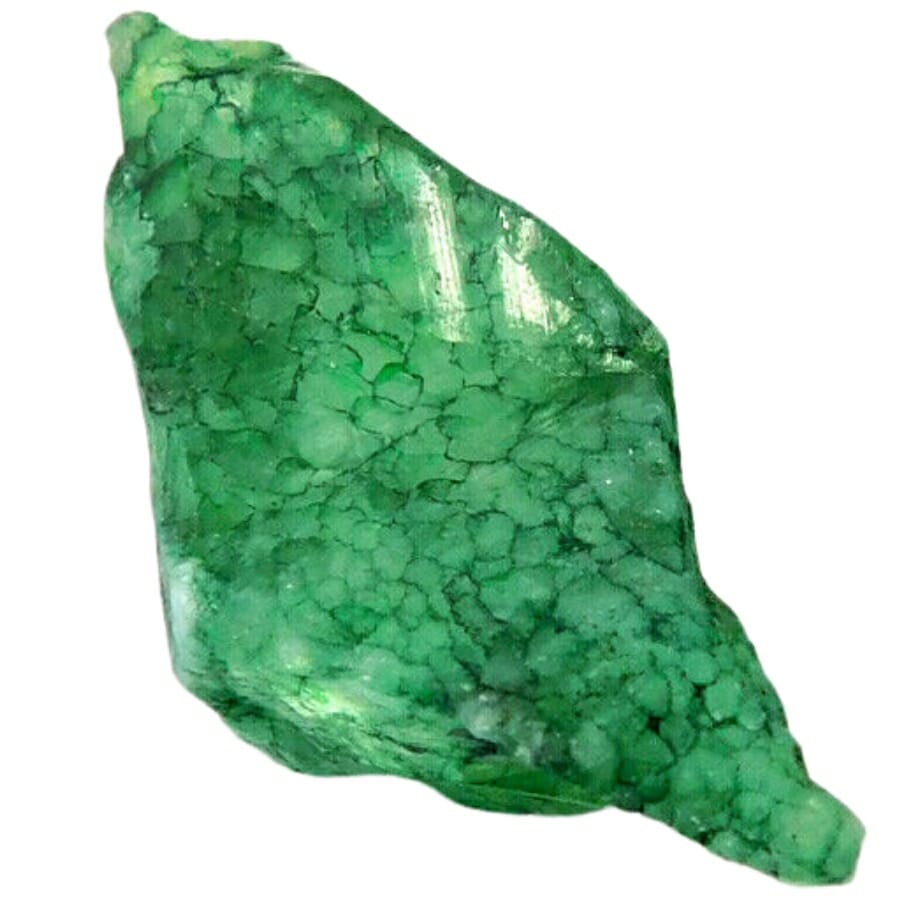
Dyed Quartz Jade is another fake that looks like real jade but is made of quartz, which is a different type of mineral. Quartz is a more common mineral than jade, so it’s easier to find and less expensive.
When the quartz is taken out of the ground, it goes through a process called dying. This is where they add colors to the quartz to make it look like jade, which is naturally green or other colors.
The process of dying can be very complicated. To get the color into the quartz, they use chemicals and heat. They soak the quartz in the dye, and sometimes they heat it to make tiny cracks in the quartz so the dye can get deeper. So, even after the quartz is cut and polished, the color will still be there.
After the quartz has been dyed to look like jade, it needs to be shaped. Workers cut and polish the dyed quartz into beautiful shapes like bangles, beads, and statues, just like they do with real jade. Now, you can sell it as jade.
People who sell Dyed Quartz Jade count on buyers not knowing the difference between real jade and dyed quartz. The dyed quartz is pretty, but it doesn’t have the special qualities that make real jade so valuable and loved.
How you can identify “dyed quartz jade” being sold as real jade
Examine the color
Dyed quartz usually has uneven color or might have unnatural bubbles or inclusions. Real jade has a smooth, rich color while dyed quartz may show color concentrations or an artificial-looking appearance.
Do a scratch test
Real jade feels cold to the touch and retains its coolness for a while, but dyed quartz will warm up quickly when held. You’ll notice a clear difference in how they feel against your skin which is a big hint toward spotting fake jade.
Test the temperature
Jade is a hard stone that won’t get scratched easily. If you try gently scratching the surface of the supposed jade with a knife or key and it leaves a visible mark, it’s likely dyed quartz and not genuine jade.
Glass Jade
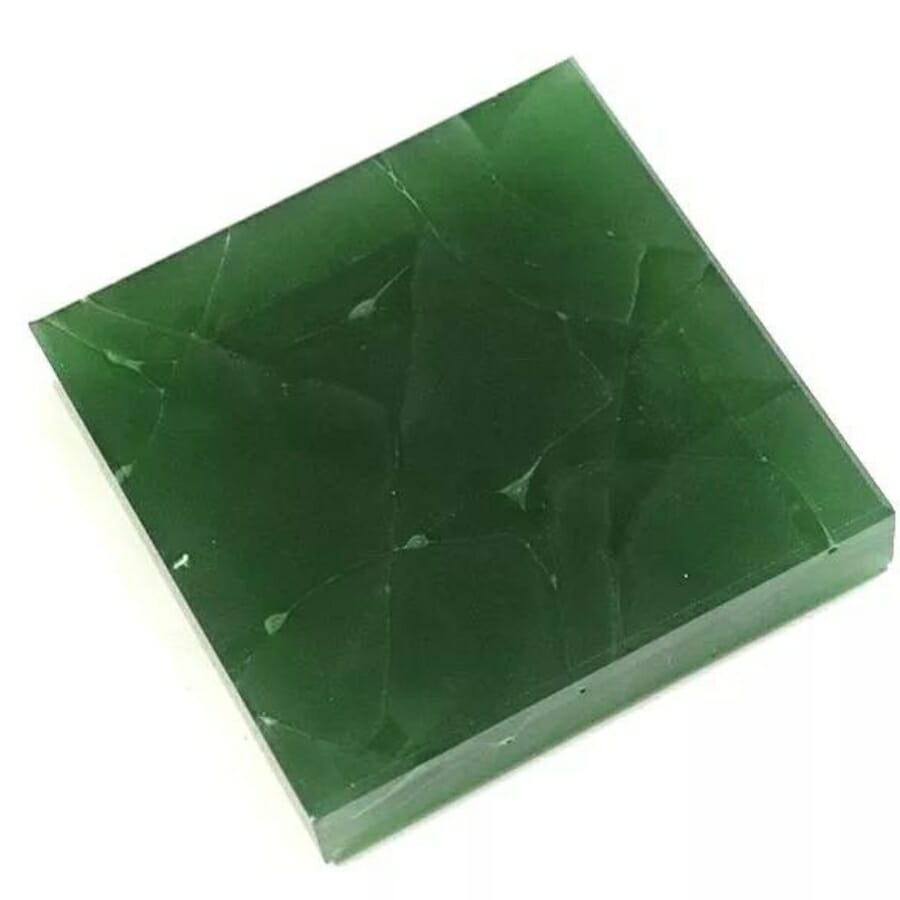
Glass Jade is a clever copy of real jade that is made out of glass. Making something look like jade takes a lot of creativity and deception. The people who make glass heat it up until it’s liquid.
They can add different colors to the molten glass to try to make it look like real jade, which is usually green but can also be other colors. They may have white or other colors swirling in them to look like good jade.
After the glass is colored, it is let to cool and starts to get hard again. Once it’s solid, skilled workers cut, shape, and polish it to look like jewelry or small statues made of jade.
They use techniques that are similar to those used on real jade to make pieces that look a lot like real jade. Now comes the time to sell. Some sellers might try to sell Glass Jade as real jade, especially to buyers who don’t know how to tell the difference.
They show it off just like real jade, and it can be hard to tell the difference if you don’t look closely or know what to look for.
Real jade might look nice and convincing, but glass jade doesn’t have the same cool feel, weight, or inner glow. It’s a fake trying to look like the real precious stone, but if you look closely, you can tell the difference.
How you can identify “glass jade” being sold as real jade
Do a scratch test
Real jade is tougher than glass. If you try to scratch the surface of glass jade with a knife or a key, it is likely to get scratched or marked, but real jade will not be damaged in any way.
Listen to the sound
When real jade pieces are tapped together, they make a unique clinking sound. Glass jade, on the other hand, will make a higher-pitched sound more like that of glass. The sound can be a good way to tell if jade is real or not.
Observe its transparency
Real jade is either slightly see-through or opaque, while glass jade lets more light through and often shines brightly like glass. You can use a flashlight to see how the light moves through it.
Plastic Jade
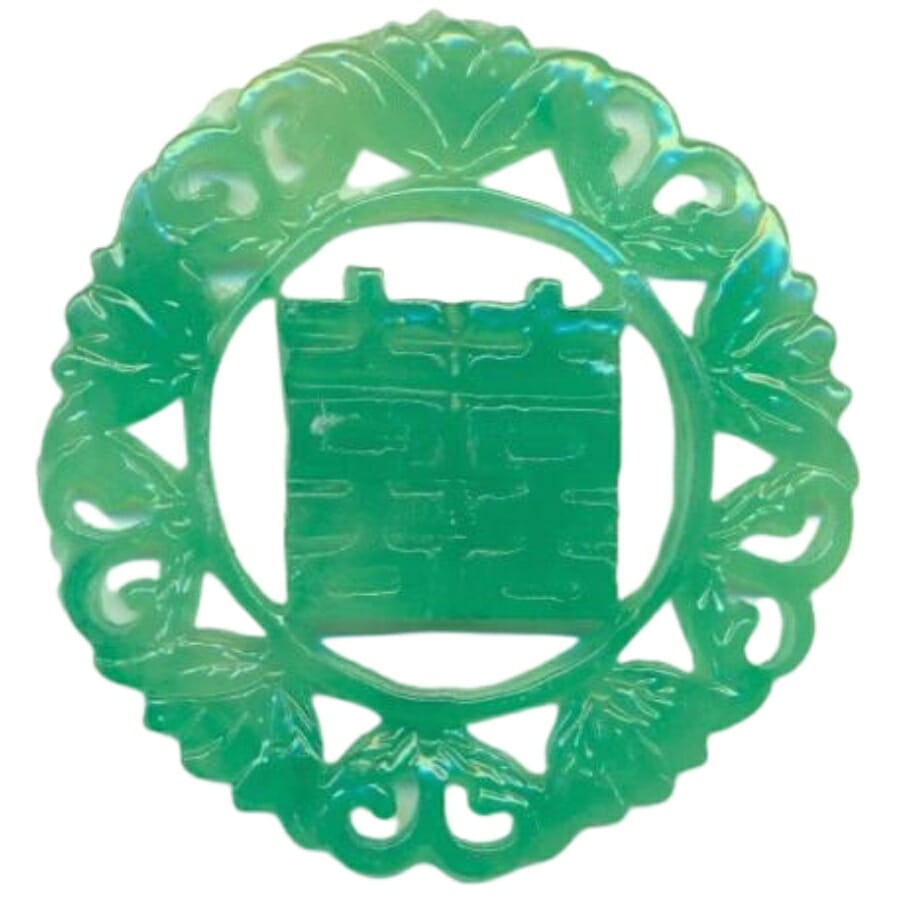
Plastic jade is not like real jade, but if it’s made well, it can look like jade. The plastic is turned into a liquid. Then, colorants are added to make it look like real jade, which is usually green but can also be other colors.
Sometimes, different colors are swirled into the plastic to make it look like real jade. Once the color is added, the liquid plastic is poured into molds of different shapes, like jade bangles, beads, or statues.
After it hardens, it pops out of the molds, and it looks like jade! They will then polish and finish the plastic pieces so they look more like real jade. At first glance, it can look very real because it’s shiny and smooth.
Now, these pieces of plastic jade are ready to sell. Sellers might put them next to real jade pieces or label them as real jade to trick buyers who might not know any better.
Real jade is much more expensive than plastic jade, so sellers might try to sell it for a high price by saying it’s real jade. Plastic jade might look fine from a distance, but it doesn’t have the same cool feel, weight, or glow as real jade.
If you know how real jade looks and feels, you won’t be fooled by fake plastic jade.
How you can identify “plastic jade” being sold as real jade
Do a burn test
This one should be done cautiously! If you heat a needle and try to push it into the jade, genuine jade won’t melt. However, plastic will melt or show a mark, revealing its true nature. But always be careful, as this can damage the piece.
Feel its temperature
Real jade stays cool longer than plastic when you touch it. If the item quickly warms up to your body temperature when you hold it, it may be made of plastic.
Weigh the specimen
Because it is so dense, real jade feels heavy when you hold it. Plastic jade will feel much lighter, almost like it doesn’t have the weight you’d expect from a real stone.
Serpentine Jade
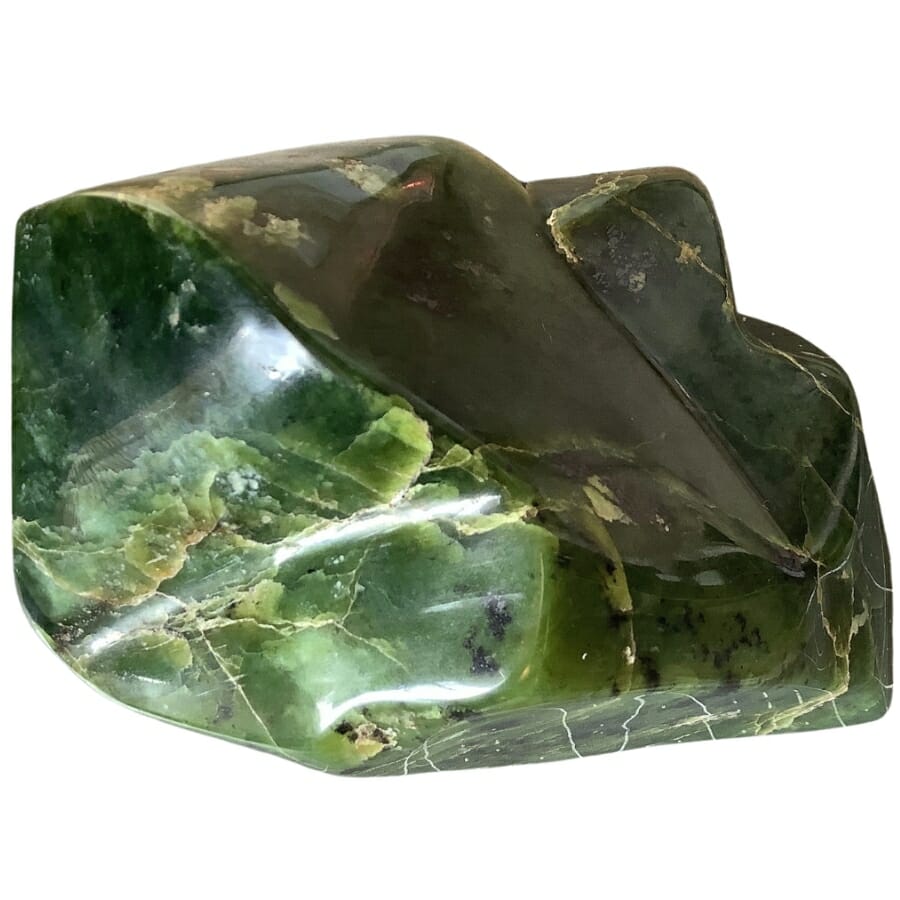
Serpentine jade is a different kind of stone called serpentine, not jade. It is often used in place of real jade because it looks a lot like jade.
Miners find serpentine in the ground and pull it out. Serpentine is easier to find and costs less than real jade, so it is often used to make fake jade. Once they have the serpentine, they go to the workshops.
Serpentine is cut, shaped, and polished by skilled workers just like real jade. They make beautiful things out of it, like jewelry and small sculptures. They can also dye the serpentine to make it look more like jade, which can be very convincing!
Now, you can sell it as jade. Sellers might try to fool buyers who don’t know the difference by saying that serpentine jade is real. Most of the time, the price of serpentine jade is less than the price of real jade but more than what serpentine normally costs.
Serpentine jade might fool some people, but it doesn’t feel as cool, isn’t as hard, and doesn’t have the same glow as real jade. Knowing the difference between real and Serpentine jade will help you ensure you’re getting the real thing.
How you can identify “Serpentine jade” being sold as real jade
Evaluate the colors
Even though real jade and serpentine jade can be the same color, the luster of serpentine jade can be more waxy or greasy than the luster of real jade, which is more like glass. You might find a clue if you look closely at the shine and feel.
Test its density
When you hold it in your hand, real jade feels dense and heavy for its size. On the other hand, Serpentine jade will feel lighter and less substantial, which can hint at it being a fake.
Perform a hardness test
Real jade is a hard stone that doesn’t get scratched easily. Serpentine jade, on the other hand, is softer. If you lightly scratch the surface with a knife or key and see a mark, it’s probably not real jade but serpentine.
How To Tell If Jade Is Real Vs Fake
You can tell if a jade is real by looking at how it’s made. By looking at these characteristics and, in some cases, getting help from a professional, you can be sure that your gem is real and enjoy the real beauty and value of real jade.
How To Identify Fake Jade When It’s Cut Or Polished
It can be hard to figure out what jade is, especially when it has been cut or polished and looks its best. With its shiny surface and beautiful colors, fake jade looks like the real one.
But if you have a good eye and know a few tricks, you can tell the real jade from the fakes, which can be a fun and educational experience that will help you understand this precious stone’s true value and authenticity.
Assess density
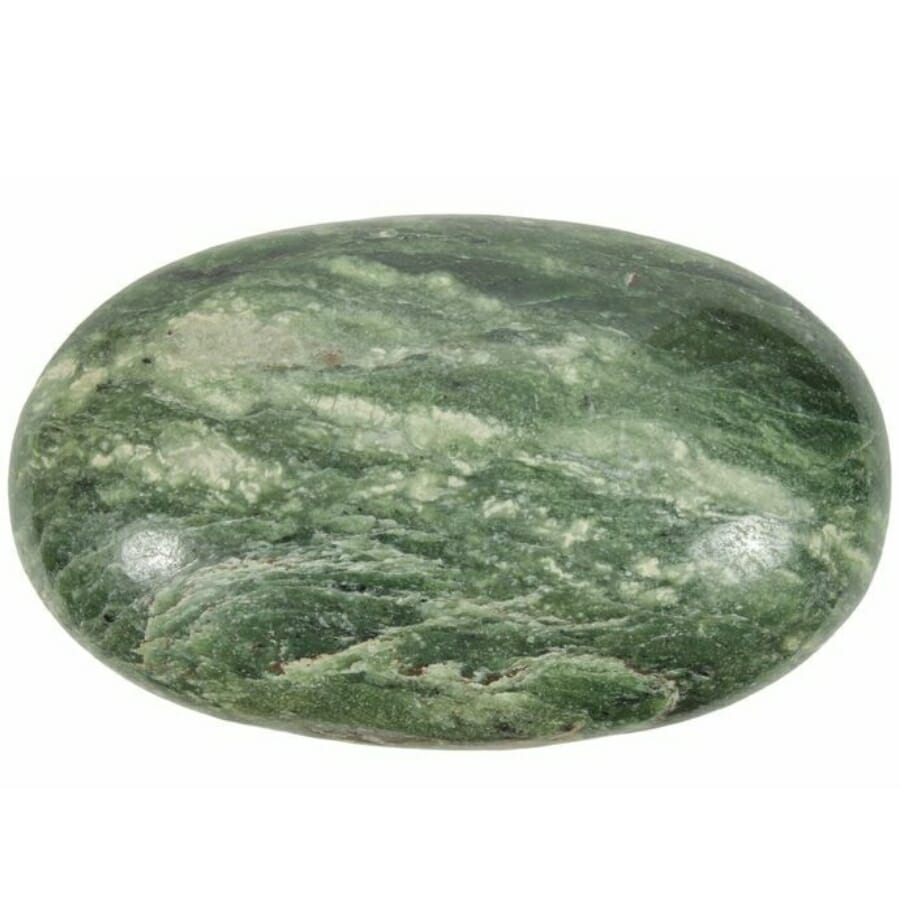
When you pick up a piece of real jade, one of the first things you might notice is its weight. Real jade is quite dense, meaning it feels heavy for its size. When it’s cut and polished, this density can give jade a pleasant, substantial feel in your hand.
Hold the piece of jade in your hand so you can feel how heavy it is. The real thing should weigh more than it looks. It’s like picking up a rock and realizing it’s heavier than a sponge of the same size.
Now, try to compare it to another stone that is about the same size. It’s a good sign if the jade feels heavier. But you should be wary if it feels like plastic or glass and is lighter. Fake jade might be made of less dense and lighter-weight materials.
Tap the jade gently against your teeth for another cool trick. Real jade sounds solid and dense, but fake jade may sound hollow or just not as solid. It’s like the difference between a thunk and a tink.
These easy tests can help you figure out how dense a piece of jade is, which can tell you if it’s real or a fake. Remember that it takes some practice to know how real jade feels and sounds, but it’s a fun way to become an expert at finding jade!
Conduct scratch test
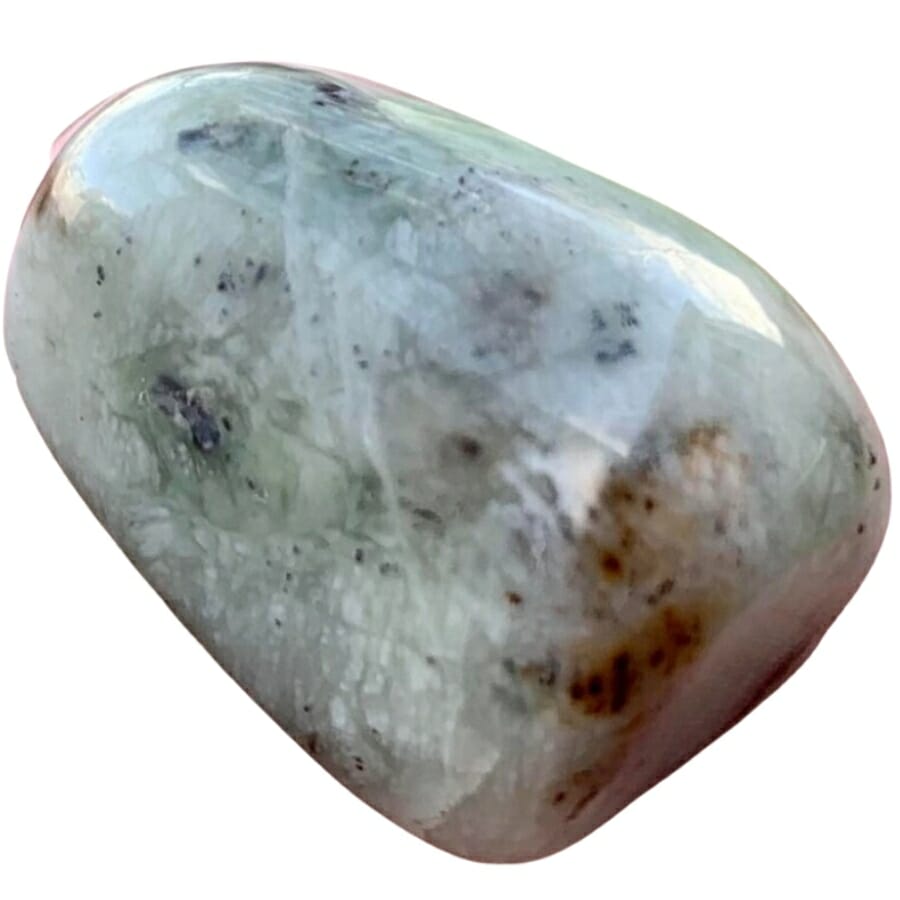
Scratching a piece of real jade is a simple way to see if it’s real. This is because real jade is naturally hard.
Pick a small, hidden spot on your jade piece to test. This way, you won’t ruin the way it looks. We need to be careful because we don’t want to do any damage that can be seen.
Now, try to make a small scratch with a steel needle or knife point. Make sure to move slowly and steadily, and it’s best to have an adult nearby for this part to make sure you’re safe.
Look closely at the spot after you’ve tried to scratch it. Real jade is a hard stone that isn’t easy to scratch. If your piece is real, you shouldn’t be able to scratch it, and there shouldn’t be any marks on it.
On the other hand, a scratch mark will appear on a fake made of softer materials like glass or plastic. This scratch test is a good way to tell if a piece of cut and polished jade is real or fake. The scratch test should be done carefully, though, so that the stone doesn’t get hurt and people don’t get hurt during the test.
Examine transparency
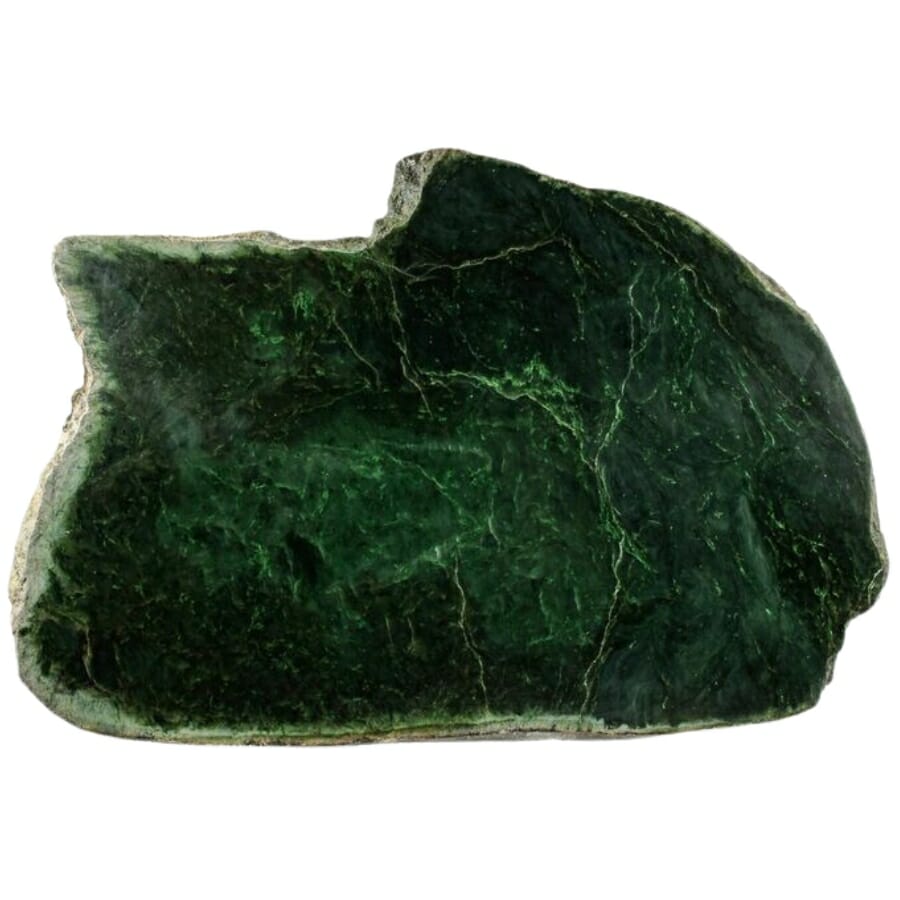
When you look at how clear a piece of jade is, it can be like looking into a mystery. Real jade can be different levels of clear, but it always has a glow and depth that fakes usually don’t have.
Hold your jade piece up to a light, but be careful not to get it too close to your eyes. Check it out. Real jade can be very dark or a little bit see-through. If it’s see-through, you should be able to see a rich, glowing color that’s easy on the eyes.
Take your time and watch how the light moves through the jade. Real jade scatters light in a special way that gives it a soft, attractive glow. On the other hand, fake jade might just let light pass through without that special glow.
By looking at the piece’s transparency and how it reacts to light, you can better understand whether it’s a real treasure or a clever fake. The unique, enchanting glow of real jade is a sign that it’s real and tells stories of its beauty and value from the past.
How To Identify Fake Jade When It’s Raw
Finding real jade in its raw, unpolished state can be a bit of a challenge, but with a few tips, it can be like going on a treasure hunt. Raw jade doesn’t look as nice as polished jade.
Even in its raw form, there are ways to tell real jade from fake jade, such as by looking at its color, density, and texture. This will give you clues to its true identity and ensure you’re on the right track to finding real jade treasures.
Color inspection
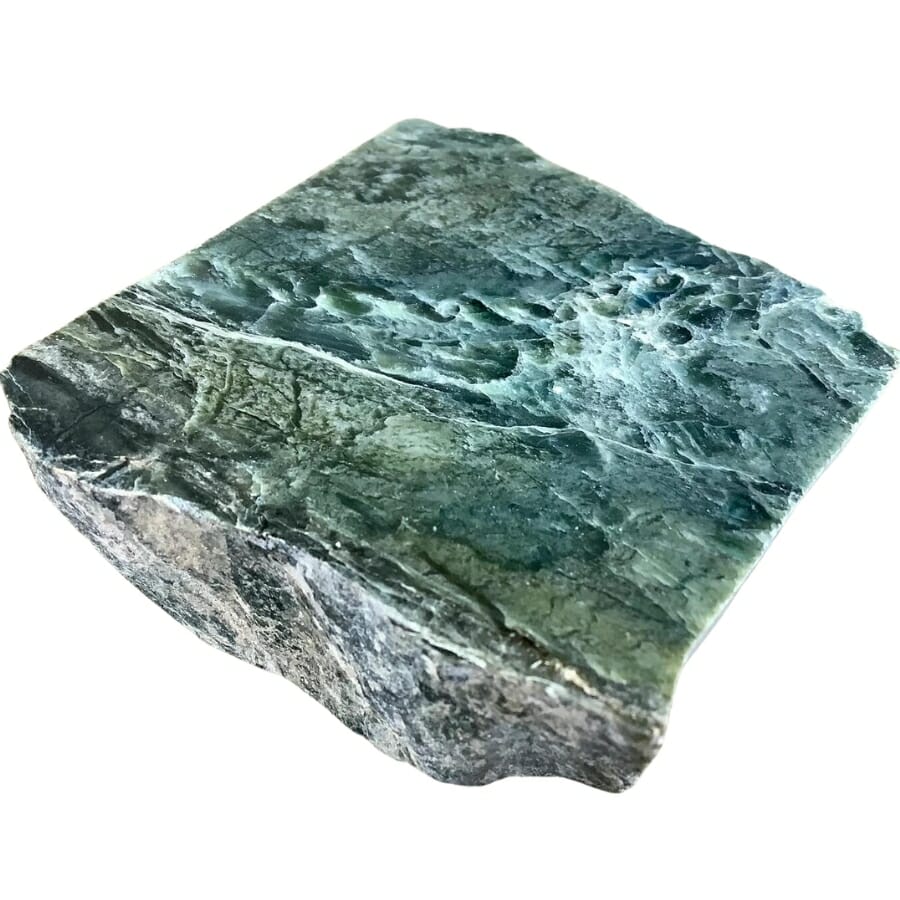
When looking for real jade, the color can tell you a lot. Raw jade has a kind of beauty that comes from the earth.
Look closely at the color of the jade. Real jade can be green, white, or even black, which are all earthy colors. The color should look natural and not too bright.
You can look up pictures of real raw jade online or in books and compare the color of your piece to those. Notice how the color of real jade is smooth and soft, while the color of fake jade is often flashy or too bright.
Sometimes dye is used to make fake jade look like the real thing. Wipe the jade with a white cloth to see if it has any dye on it. If any color comes off on the cloth, it could be a sign that the jade is not real.
The color isn’t the only way to tell if the jade is real or fake, but it’s a good place to start. Real jade has a color that tells a story about how it got there from deep in the earth, but fake jade often uses colors that don’t belong to it to try to get your attention.
Hardness test
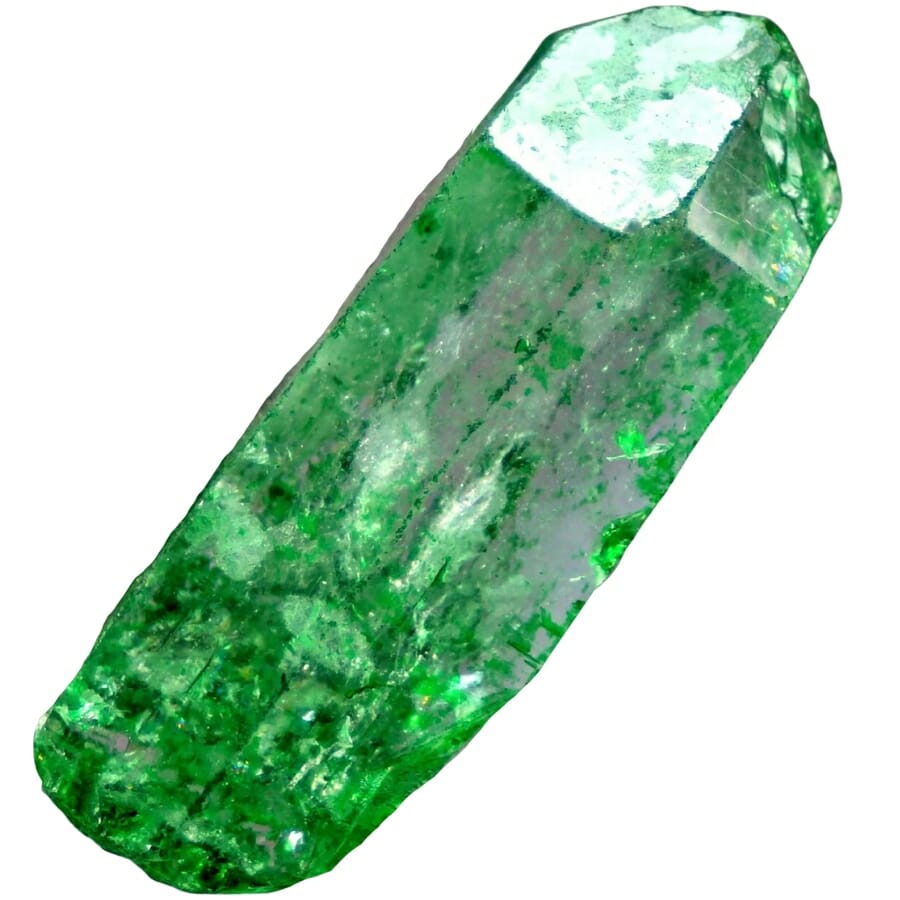
The hardness of jade is a silent testimony to its authenticity. Genuine jade is quite a tough stone.
Find a hidden or less obvious part of the jade piece to test so that you don’t ruin its appearance. A scratch test can help in this situation. Try scratching the surface gently with a steel nail or a piece of quartz.
Since jade is harder than steel and quartz, scratch shouldn’t be easy. If the jade is easy to scratch, it’s probably not real.
Many fake jades, like serpentine or soapstone, are softer than real jade. But be careful, because some materials that look like jade could also be hard.
You could also go to a gemologist. They have tools that can accurately measure how hard a stone is. Minerals are ranked by how hard they are on a special scale called the Mohs scale.
On the Mohs scale, real jade is between 6.5 and 7.0, which means it is pretty hard and won’t scratch easily.
You can find out more about jade by testing how hard it is. It’s almost like jade is showing you how strong and real it is by standing up to fakes who try to copy its durability.
Texture observation
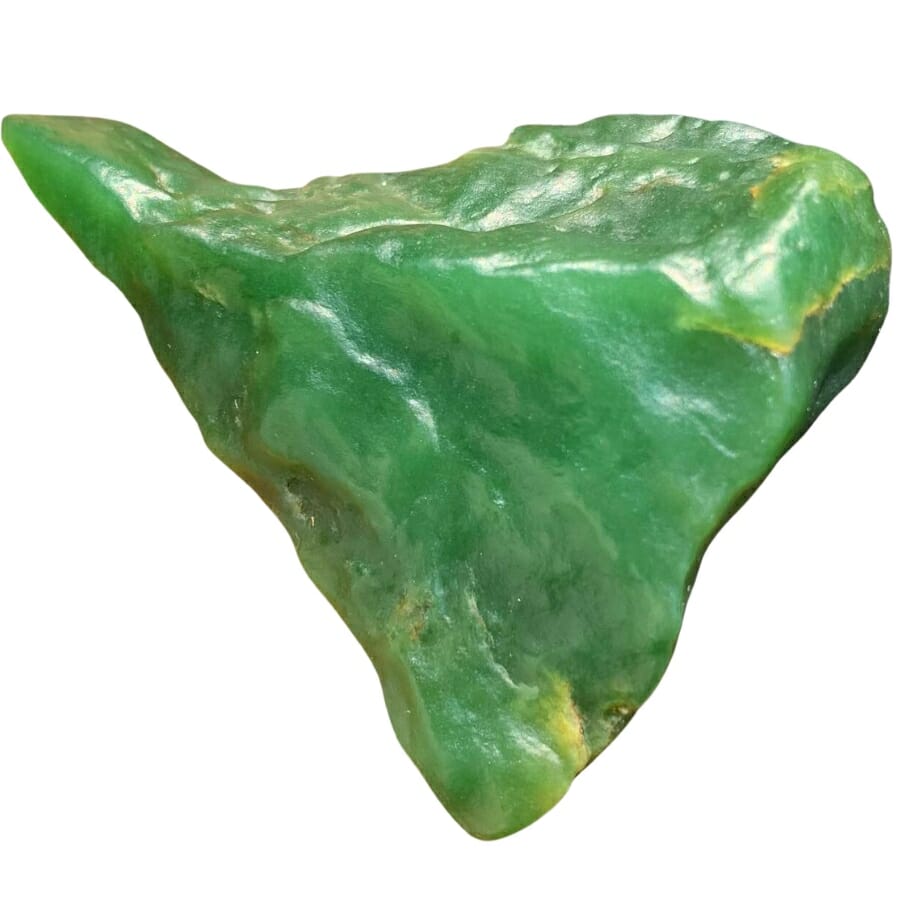
Examining the texture of raw jade can be like reading its life story from the rocky cradle it came from. Unlike polished jade, raw jade holds a more rugged beauty.
Hold the jade in your hand to start. Raw real jade has a smooth but rough feel to it. It should feel dense and heavy for its size, which would show that it is solid and small.
Now, pay close attention to the surface. When you look closely, real raw jade has a fibrous or granular look. It may have some flaws, but they should look natural and not like they were put there on purpose.
Look at pictures of real raw jade and see how it looks. Real jade will start to look like it has a pattern after a while. Fake jade often feels waxy, resinous, or too smooth. It doesn’t have the real, earthy feel of real jade.
By touching raw jade and looking at how it feels, you can enter an ancient world of wonder and get a sense of what this wonderful stone is like. If you take the time to listen, the texture will tell you stories about where it came from and how real it is.

